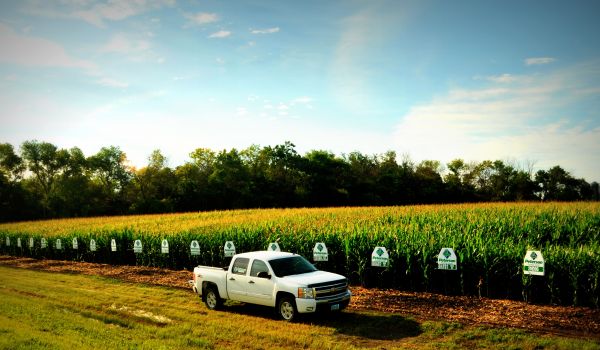Use Caution When Cutting Back on Inputs

If you plan for a failure, you will get one. This is one of my favorite sayings related to crop production.
Finding a way to make a profit in 2015 has been a hot topic this winter. There are two ways to profit: produce a bigger crop to raise revenue, or cut back on inputs to reduce expenses. While reducing expenses is the easiest and the only action giving us full control, it will also hurt potential yield, negating any benefits.
I’ve heard talk of cutting back on seed population, traits, fertility, tillage, and other inputs like growth promoters and other trial additives. All of these affect yield in some way. Choosing the variable with the least yield impact is a tough decision.
Be especially careful when cutting back on seed population, traits, and fertility. Population studies at Peterson Farms Seed have shown a real advantage to keeping hybrids in the 32-35 range; traits can be adjusted with chemical choices and IRM considerations; and reducing fertility almost always guarantees reduced yield potential.
In the upper plains, Nitrogen is the most yield-limiting factor in corn production. The combination of our soils and typical weather patterns are conducive to leaching and/or denitrification. We need to think about corn yields by reaching for their potential rather than trying to reach a goal. Striving to unlock the seed’s potential means we’ll work hard to minimize yield-robbing events.
Early season rainfall can diminish the amount of N available in the soil through denitrification or leaching.
- Denitrification occurs in saturated soils after 2-3 days when the Nitrate N converts to N gas and is lost to the atmosphere. Up to 10% of N in soil can be lost in those 3 days with an escalating amount lost in each day that follows. Flat fields with poor drainage (surface or subsoil) are the usual culprits for denitrification.
- Leaching tends to occur in sandy, coarse soils where the Nitrate N is pushed down below the root zone in the soil profile making it unavailable to the plant.
I believe denitrification losses are higher in our region and need to be addressed. Drainage is the first step; there are other products available to slow the change of N to the Nitrate form. Nitrapyrin (N-Serve, Instinct) keeps Nitrogen in the Ammonium (NH4) form, which is more stable in the soil. Encapsulated urea protects the granule from water and delays the nitrification process, allowing the N to be available longer.
Timing is critical with Nitrogen management. The corn plant starts to use the most Nitrogen around the V12 stage. The more Nitrogen at V12, the more the plant has available to use, resulting in higher yield potential. Delaying Nitrogen application as long as possible allows for more N to be available to the plant for a longer period of time. Sidedress applications are the best way to minimize loss as sidedressing allows applied fertilizer to be taken up and used by the plant. In order to maximize yield, the plant must not run out of Nitrogen.
My mantra this spring is: Go for a bigger crop rather than skipping on inputs. That cost-cutting strategy will result in fewer bushels, leaving you with less profit overall. There are many variables that need to come together to make a successful crop. How will you make a profit this year?
If you plan for a failure, you will get one. Instead, be sure to plan for success this spring.











